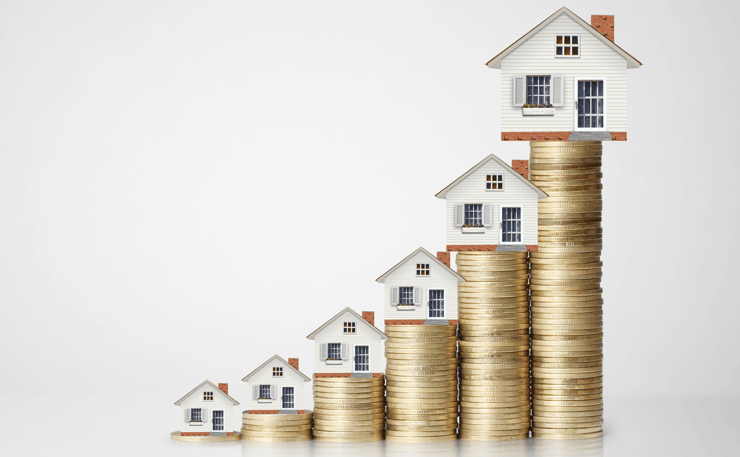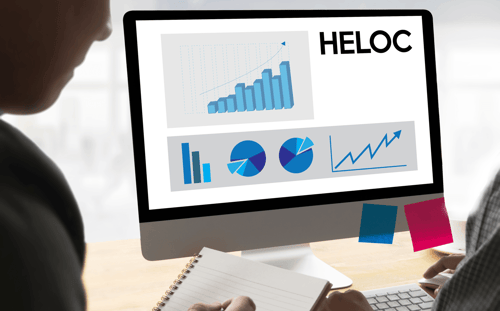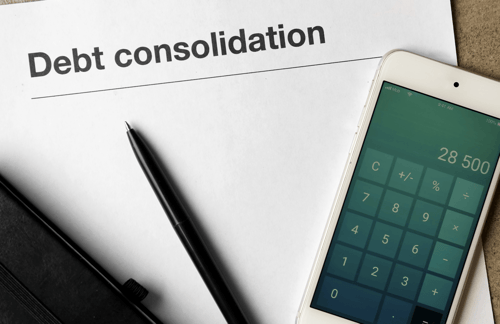 A home equity line of credit (HELOC) offers an easy way to access the equity in your home with flexible repayment terms and a low interest rate. While a HELOC can be a smart decision to consolidate debt, fund home improvements, or finance a major purchase, it's worth considering all of your options first.
A home equity line of credit (HELOC) offers an easy way to access the equity in your home with flexible repayment terms and a low interest rate. While a HELOC can be a smart decision to consolidate debt, fund home improvements, or finance a major purchase, it's worth considering all of your options first.
A HELOC is secured by your home which means you may face foreclosure if you are unable to make payments. It can also be easy to accumulate more debt than you can handle with a substantial credit line. Here are 10 do's and don'ts for using a HELOC responsibly.
DO: Use your HELOC for home renovations that add value
Home renovations and upgrades can be a smart investment to increase your home's value but coming up with the money can be challenging. Even a modest kitchen remodel can cost more than $15,000. If you don't have enough savings, a HELOC is a good way to fund home improvement projects. Just make sure you're using the debt to add value to your home or cover necessary repairs like a new roof. Adding a swimming pool, for example, may not be the best use of your HELOC. If you need to sell your home and pay back your primary and secondary mortgages, you may find yourself underwater.
DON'T: Use a HELOC to finance a car, education, or a business
It can be tempting to use a HELOC to finance all types of big expenses like a new car or even starting a business. Doing so may increase risk with little payoff. An auto loan, for example, is a better option when buying a car as this loan option is made for this specific purpose with a finance term that's better suited to the expected life of a car. You don't want to put your home on the line to finance a purchase that will quickly lose value. The debt will most likely outlive the car. There are also better options for funding higher education. You shouldn't use a HELOC to start a business, either, as launching a business can be high-risk.
 DO: Have a repayment plan for your HELOC
DO: Have a repayment plan for your HELOC
When you take out a HELOC, make sure you have a plan in place to repay your balance. At the very least, make extra payments toward principal every month to keep your HELOC payoff in line with your mortgage. Don't take on more debt than you can afford or use the HELOC to spend beyond your income.
DON'T: Make interest-only payments on your loan
According to a recent survey by the Financial Consumer Agency of Canada, about 27% of HELOC borrowers in Canada are making interest-only payments most of the time. The survey found that 25 to 34-year-olds are most likely to make interest-only payments and often use the HELOC to pay other debts. Many of these borrowers would struggle to afford their HELOC payments if they go up by $100.
Interest-only payments may stop your debt from growing but doing this means you won't repay your HELOC anytime soon. In the short-term, these small payments allow you to borrow more money for a seemingly low cost but you will face significantly higher payments once the interest-only period ends. Your principal balance will not go down and, until you start paying down the principal, your loan won't go anywhere.
Consider this: if you borrow $100,000 with a HELOC and make interest-only payments of $370 per month, you will have paid $45,000 in interest after 10 years but your balance will still be $100,000.
 DO: Consolidate high-interest debt with a HELOC
DO: Consolidate high-interest debt with a HELOC
The average interest rate on a credit card in Canada is 19% but many cards have rates as high as 29.99%. HELOC rates can be as low as 3.85%. If you are struggling to pay high-interest credit card debt, or you want to pay off the debt faster and save on interest, consolidating the debt with a HELOC may be a smart move.
This strategy does come with a warning: replacing unsecured credit card debt with a secured HELOC introduces risk. You are transforming unsecured debt into a loan secured by your home. If you aren't able to make your HELOC payments, you may face foreclosure. Make sure you can afford your payments and pay off your HELOC quickly to avoid carrying credit card debt tied to your home.
DON'T: Use a HELOC to pay debt if you haven't stopped spending
Using a HELOC to consolidate debt can be smart if you're careful but it's a bad strategy if you are still accumulating more debt. To make this strategy work for you, stop borrowing and using your credit cards. If your debt is the result of bad spending habits, make sure you have moved on from your poor financial habits or your debt will only grow and put your home at risk.
DO: Use a HELOC to fund short-term gaps between your income and expenses
HELOCs work best when used to either fund renovations or cover short-term emergencies. Maybe you were briefly out of work, suffered a serious injury, or faced unexpected car repairs. In these cases, you can use your HELOC to cover the difference between your expenses and your income, but it should only be a short-term solution. If used in the long-run, your HELOC balance will quickly become unaffordable and difficult to pay back.
 DON'T: Use your HELOC to make payments on other debts
DON'T: Use your HELOC to make payments on other debts
According to the FCAC survey, almost 30% of Canadian HELOC borrowers use their line of credit to at least sometimes make payments on other debts. It can be tempting to use your HELOC to make a credit card or auto loan payment when you're short on money but this will come back to bite you. This is a slippery slope that can lead to a high HELOC balance that becomes difficult to afford — especially when interest rates go up. This is at least part of the reason the average HELOC borrower owes $65,000.
DO: Use a HELOC as an emergency source of money
Unlike a home equity loan, a HELOC gives you access to a line of credit that you can use as needed — or leave untouched until you need to borrow money. It's a good idea to take out a HELOC in case of emergency in the future, such as car repairs or medical expenses.
DON'T: Use a HELOC to cover everyday expenses or on splurging
One of the worst mistakes you can make with a HELOC is using it to spend beyond your means or cover regular expenses. Unfortunately, this can be easy to do and it's a common problem among Canadian borrowers. It can be easy to build up your line of credit and spend more than you earn. As this debt grows, even interest-only payments may become too expensive — especially if interest rates go up.
When used correctly, a HELOC can be a powerful tool to access your hard-earned home equity, make your home better suited to your needs, support a higher home value, or even cover short-term financial emergencies. Before taking out a HELOC, make sure you have carefully considered your options and have a plan in place to pay back anything you borrow.






